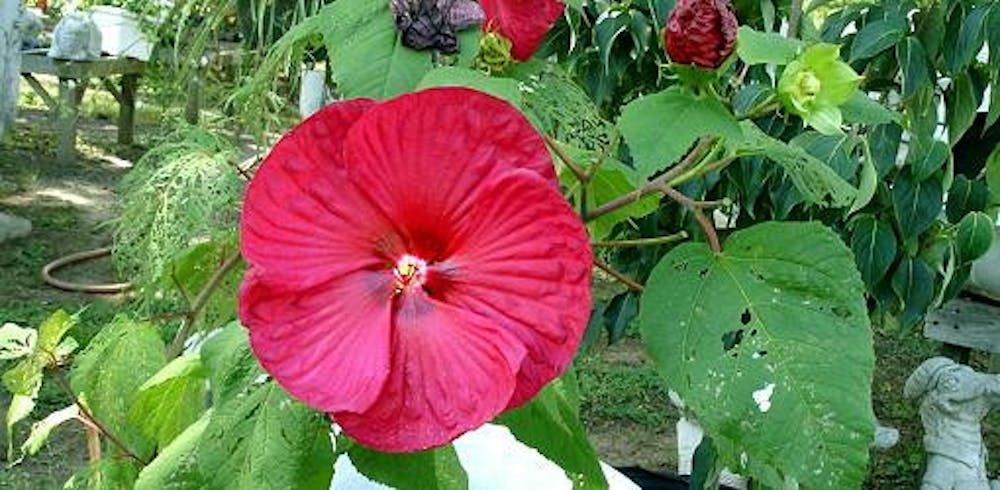The Hibiscus is a group of plants with large, tropical flowers. The types of plants range from small trees to annual plants. We encounter Hibiscus often in our daily lives in some surprising ways!
The most notable example is the vegetable okra, slimy seedpods which are fried in the American South and eaten raw in Japan. If you Google Abelmoschus esculentus, you’ll see those okra pods dangling close to a large and beautiful flower. The okras have been reclassified away from the genus Hibiscus, but are still in the tribe (an order of classification in between subfamily and genus, for botany fiends) Hibisceae.
Another edible usage of Hibiscus is the steeping of dried Hibiscus flowers to make tea. Since red blooms are usually used, teas brewed with Hibiscus take on a burgundy hue. Combined with the tangy and tart taste, Hibiscus tea is quite reminiscent of an herbal pomegranate juice! In fact, the bright color of Hibiscus tea belies its nutritional value, as it is filled with Vitamin A. Its diuretic properties make Hibiscus tea a dubious choice for everyday consumption, for fear of dehydration and washing out medication from your system too early, but a cup every so often is a refreshing drink. In South America, many nations enjoy the chilled Hibiscus beverage, Agua Fresca. In the grocery store, you can get your own Hibiscus flowers in a boxed tea, alone or in combination. An affordable option is Bigelow’s Wild Blueberry and Acai Tea. You can also buy plain Hibiscus flowers in bulk at Moon Co-op right behind Kroger’s.
If you simply want a Hibiscus as a gorgeous plant, indoors or out, here is a rundown of the three main types of Hibisucs:
- Tropical Hibiscus
Be sure to plant these in a sandy soil mixed with compost or other organic matter like peat moss. Fertilize with low phosphorous, high nitrogen fertilizer, lightly and about every month and a half, between spring and fall.

- Hardy Perennial Hibiscus

- Deciduous Hibiscus
Whether you want to munch the seed pods, admire the flowers, or make them into tea, be sure to include Hibiscus into your day! It’s a lovely way to be more connected with the many plants that sustain us.

